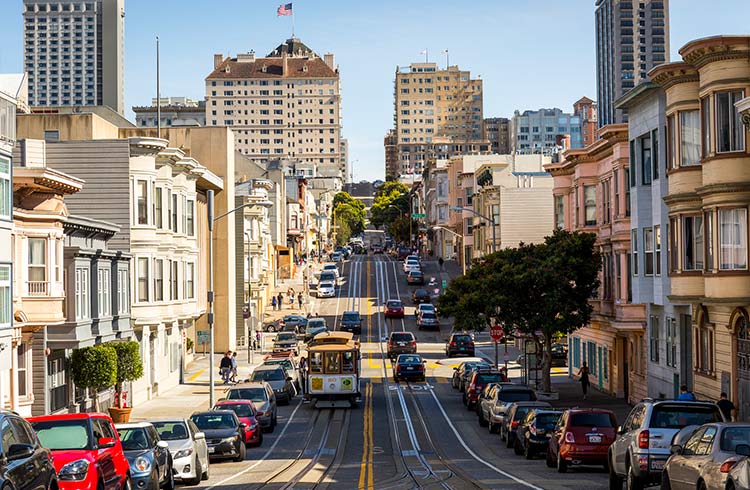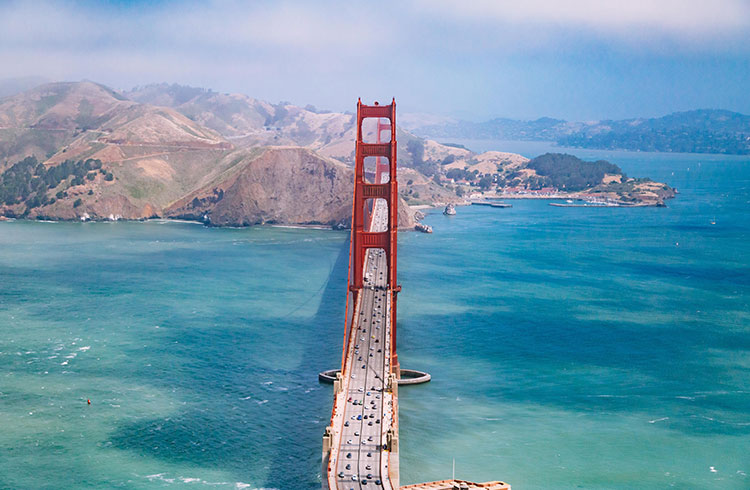Transport Tips for Travelers in San Francisco
Make getting around San Francisco easy with these tips from a local nomad.
 Photo © Getty Images/RICOWde
Photo © Getty Images/RICOWde
- Riding San Francisco's Cable Car
- Driving Around San Francisco
- Public Transport Options in San Francisco
- San Francisco Ferry
Riding San Francisco's Cable Cars
San Francisco’s cable cars might be iconic, but they aren't the most efficient way to get around the city as they only run along three short routes in and around Downtown. Tickets can be bought
Safety standards onboard the cable cars are historic, too. Ride on the open platform at your own risk, and hold on tight, especially be ready for sudden stops and starts.
Driving Around San Francisco
San Francisco's one-way streets and confusing road signs make driving around the city rather daunting. First-time visitors might feel a little overwhelmed taking a rental car around town, but perhaps you're up for the challenge.
Even if you are a brave, patient driver when the time comes to find parking in the city, good luck; parking in San Francisco is a nightmare.
You might spend up to an hour searching for a spot. When you do find a space to leave the car, you might be required to parallel park on a hill with a near vertical incline, and insert
Public Transport Options in San Francisco
Locals call all bus, cable car, and light rail transit "the Muni", and it's a cheap and reliable way to get around the city.
The public transit route maps can be confusing to newbies. If you’re willing to give it a try, download the free app called Routesy, which gives real-time estimates about the next arriving bus or train. Tickets can be bought aboard the Muni bus or Muni light rail. A ticket for a single ride and any transfers within a 90-minute period on the bus or rail will cost
Try to have the exact change for your transport fare available, and make a point of keeping coins and small bills on you at all times. Check
BART (Bay Area Rapid Transit) is the regional rail service connecting the city center with some areas of the city as well as other major destinations in the Bay
BART tickets can be purchased from vending machines in every BART station. They can be purchased with cash, credit, or debit cards. BART fares are calculated based on distance, ranging from about
San Francisco Ferries
San Francisco is located on a peninsula with the Pacific Ocean to the west and the San Francisco Bay to the east. Many people travel to the city by ferry. Travelers can also use the ferry to make trips to other cities in the Bay Area, especially if searching for cheaper accommodation. A one-way ticket on the ferry costs only a few dollars per ride, depending on your start and end destinations. Ferries to Vallejo, Oakland, and Alameda leave from the Ferry Building in downtown San Francisco. Ferries to Sausalito and Angel Island leave from Pier 41 near Fisherman's Wharf.
Related articles
Simple and flexible travel insurance
You can buy at home or while traveling, and claim online from anywhere in the world. With 150+ adventure activities covered and 24/7 emergency assistance.
Get a quote
No Comments